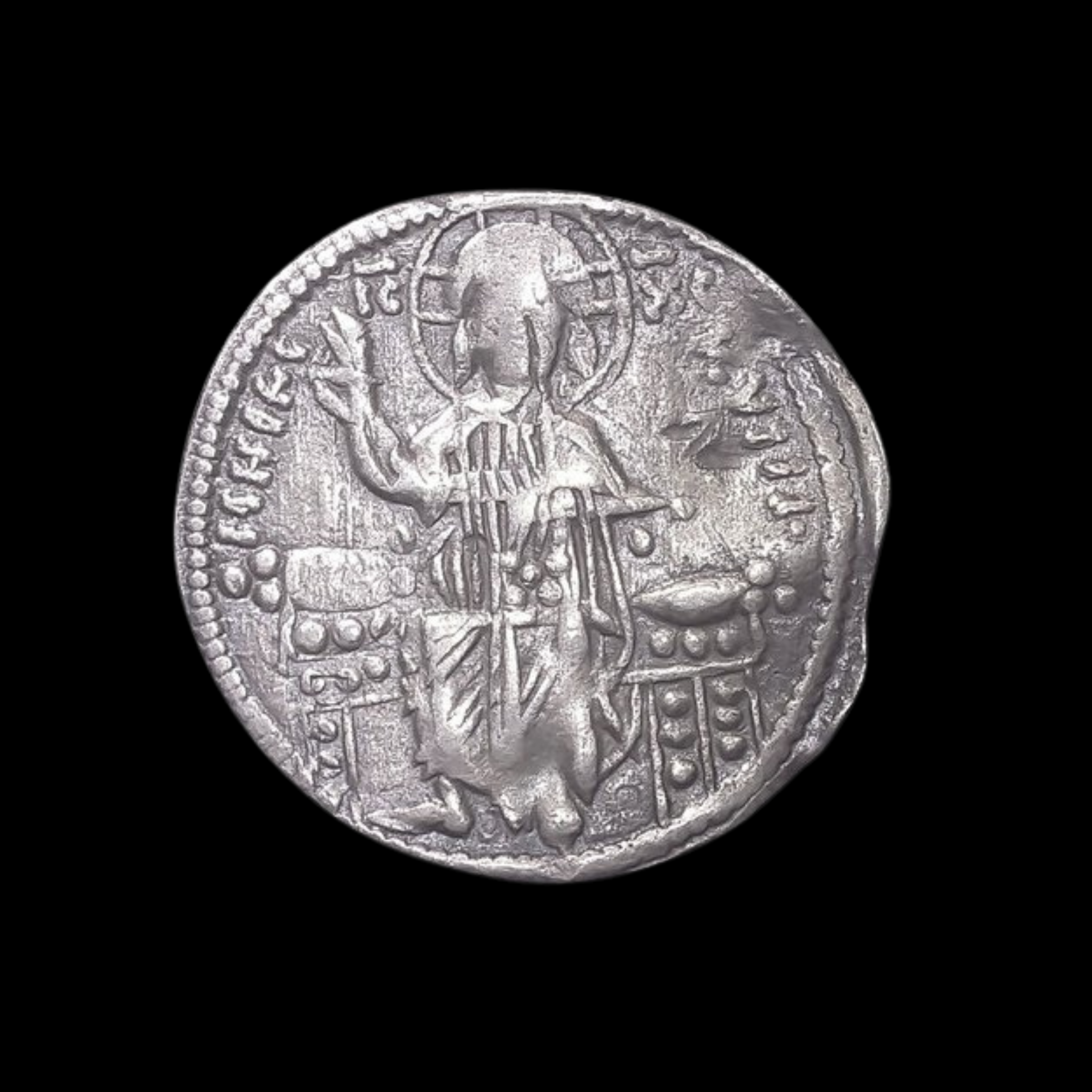Byzantine Silver Miliaresion (Silver Coin) of Emperor John I Tzimiskes (about 1050 years ago)
This silver miliaresion (Byzantine silver coin similar to a dirham) was minted between 969-976 AD in Constantinople (modern Istanbul, Turkey) during the reign of Emperor John I Tzimiskes.
Front Side: Likely features a religious image or inscription in Greek
Back Side: Probably displays imperial titles and symbols of authority
Technical Details:
Material: Silver (AR)
Condition: VF+ (Very Fine Plus)
References: S-1792, DO-7B
Historical Significance: John I Tzimiskes was a Byzantine emperor who came to power by assassinating his predecessor, Nikephoros II Phokas. Despite this violent beginning, his brief reign was marked by significant military victories against the Rus' and the Arabs, expanding Byzantine influence in Syria and eastward. The miliaresion was designed to compete with Islamic silver dirhams in international trade, showing the economic importance of maintaining Byzantine commercial connections with both European and Middle Eastern markets. Coins of this period often featured strong Christian imagery, reflecting the empire's religious identity during a time of conflict with neighboring Islamic powers.
This silver miliaresion (Byzantine silver coin similar to a dirham) was minted between 969-976 AD in Constantinople (modern Istanbul, Turkey) during the reign of Emperor John I Tzimiskes.
Front Side: Likely features a religious image or inscription in Greek
Back Side: Probably displays imperial titles and symbols of authority
Technical Details:
Material: Silver (AR)
Condition: VF+ (Very Fine Plus)
References: S-1792, DO-7B
Historical Significance: John I Tzimiskes was a Byzantine emperor who came to power by assassinating his predecessor, Nikephoros II Phokas. Despite this violent beginning, his brief reign was marked by significant military victories against the Rus' and the Arabs, expanding Byzantine influence in Syria and eastward. The miliaresion was designed to compete with Islamic silver dirhams in international trade, showing the economic importance of maintaining Byzantine commercial connections with both European and Middle Eastern markets. Coins of this period often featured strong Christian imagery, reflecting the empire's religious identity during a time of conflict with neighboring Islamic powers.
This silver miliaresion (Byzantine silver coin similar to a dirham) was minted between 969-976 AD in Constantinople (modern Istanbul, Turkey) during the reign of Emperor John I Tzimiskes.
Front Side: Likely features a religious image or inscription in Greek
Back Side: Probably displays imperial titles and symbols of authority
Technical Details:
Material: Silver (AR)
Condition: VF+ (Very Fine Plus)
References: S-1792, DO-7B
Historical Significance: John I Tzimiskes was a Byzantine emperor who came to power by assassinating his predecessor, Nikephoros II Phokas. Despite this violent beginning, his brief reign was marked by significant military victories against the Rus' and the Arabs, expanding Byzantine influence in Syria and eastward. The miliaresion was designed to compete with Islamic silver dirhams in international trade, showing the economic importance of maintaining Byzantine commercial connections with both European and Middle Eastern markets. Coins of this period often featured strong Christian imagery, reflecting the empire's religious identity during a time of conflict with neighboring Islamic powers.

















